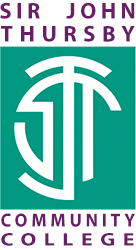Topic 1 Year 9 Geography
| Geography | |||
| Topic | Events that shook the world | ||
| No of lessons | 9 | ||
| When is it happening | Term 1 - 7 weeks | ||
| What will students learn? | Students will deepen their understanding of the impacts of various physical events on people. Students will understand how human/political decisions/events have impacted on the Quality of Life (QoL) and Standard of Life ( SoL) of people in Syria and Yemen. Deepen understanding of how the development level of a country can determine the level of impact caused by the spread of diseases. How countries work together to reduce/eradicate the problem Students will explain the impacts, both positive and negative of Brexit. | ||
| Key Knowledge that students should know at the end of 'Topic' | This is the knowledge that students will meet for the first time in this topic | The causes and impacts of earthquakes, flooding and heatwaves will be explained by referring to specific case studies. Students will explain how human and political decisions have caused and had an impact on the Syrian crisis and famine in Yemen; with a focus on how the QoL and SoL of people in these regions have been affected. Students will use knowledge of development to explain the impacts of pandemics both historically and today. Students will explain the impacts, both positive and negative of Brexit for the UK. | |
| This is knowledge that students may have met before but will need to deepen their understanding | Students already have knowledge of physical hazards (tectonics/weather) causes and impacts. Students understand the term migration and push and pull factors associated with the movement of people. Students understand how we are now connected to the world | ||
| Key Skills that students should be able to demonstrate at the end of 'Topic' | This is the skills that students will meet for the first time in this topic | Students will need to learn how to use specific facts in order to show understanding of case studies. | |
| This is skills that students may have met before but will need to develop | Students will develop Atlas, locational and map skills (symbols) to produce a global hazard map. Students will use a variety of sources (images, maps, graphs) to obtain information. Students will produce venn diagrams, bar graphs and flow line graphs. | ||
| Key vocabulary that students should know and understand | Hazard, cause, economic and environmental impacts, responses, political, tectonics, earthquake, climate change, global warming, structure, crust, mantle, inner and outer core, plates, plate boundaries, convection currents, constructive, destructive, conservative, collision boundaries, tsunami, geology, weather, climate, air pressure, relief, convectional, frontal rainfall, convection, monsoon, evaporation, condensation, precipitation, seasonal, migration (rural to urban, urban to rural, internal, international, regional), asylum seeker, refugee, conflict, development,low income countries, newly emerging economies, medium income countries, high income countries, gross domestic product, gross national income, birth rate, death rate, literacy rate, globalisation, disaster, vulnerable, famine, magnitude, megathrust, heatwave, humidity, prevailing (wind), differential heating, humanitarian, endemic, epidemic, pandemic, transmission, immunity, Brexit. | ||
| The Big Question | What events then and now have shook the world? | ||
|
Key questions that students should be able to answer at the end of the 'Topic' |
What events have shook the world? | ||
| What were the impacts of the Alaskan earthquake? | |||
| What were the impacts of the Pakistan heatwave 2015? | |||
| Why can a monsoon be bad? | |||
| Why did the Syrian crisis cause people to migrate? | |||
| How can migration numbers be shown on a graph? | |||
| How has the population been affected by the Yemen crisis? | |||
| How different were the Syrian and Yemen crises? | |||
| Will Brexit impact my life? | |||
